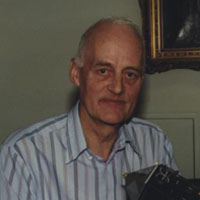Høg Erik - Gaia
Gaia contributors
Gaia was proposed in 1993 and since then, many people have been involved in the Gaia mission, whether at ESA, at industry side or at one of the institutes involved in the Gaia data processing. The Gaia Data Processing and Analysis Consortium (DPAC) is a collaboration which consists of around 450 scientists and engineers.
The list of Gaia contributors presented here should not be considered a complete representation of the entire consortium and should not be considered as a list of currenly active people on the Gaia mission. A more complete list of Gaia contributors that were involved in the creation of the Gaia catalogues can be obtained from the author lists of the Gaia Collaboration overview papers (for Gaia Data Release 1 see here, for Gaia Data Release 2 see here, for Gaia Early Data Release 3 see here, for the full Gaia Data Release 3 see here, for Gaia Focused Product Release see here). A history of contributions to the Gaia mission can be found from the acknowledgements given with each data release.
Gaia DPAC members who wish to be featured on these pages can contact the Gaia Helpdesk. Anyone who wishes to be removed from this website can contact the Gaia Helpdesk.
 |
Erik Høg Niels Bohr Institute |
|
Erik Høg has had a long career in the development of instrumentation for astrometry. He pioneered photon-counting photo-electric astrometry in meridian circles in the 1960s, the technique later used in Hipparcos. He has been involved in the European efforts in space astrometry since the earliest studies in the 1970s. Responsible for many of the innovative techniques employed in Hipparcos, he led the NDAC data analysis consortium before focusing his efforts on the Tycho experiment and catalogue construction, his brainchild. He proposed in 1992 a scanning astrometric and photometric satellite called ROEMER, employing direct imaging on CCDs as now implemented in Gaia. Formally retired from Copenhagen University Observatory (subsequently merged into the Niels Bohr Institute) in 2002, he continued to lead the Gaia photometry working group. He served on the Gaia Science Team until 2007, where he led the design of the complex on-board detector sampling schemes. He will continue to work for Gaia where possible. Erik's hobbies include gardening, swimming, travelling, and public lecturing and writing on topics such as the depth of the heavens, the age of the world, history of science, and black holes. [Published: 29/09/2003 | Updated: 31/07/2007] |
|
- Removed a total of (2) style text-align:center;
- Removed a total of (5) style text-align:justify;
- Removed a total of (1) border attribute.
- Removed a total of (1) cellpadding attribute.
- Removed a total of (1) cellspacing attribute.
Gaia people archive
- Removed a total of (1) style overflow:auto;
- Removed a total of (2) border attribute.
- Removed a total of (2) cellpadding attribute.
- Removed a total of (2) cellspacing attribute.








































 Sign in
Sign in
 Science & Technology
Science & Technology

